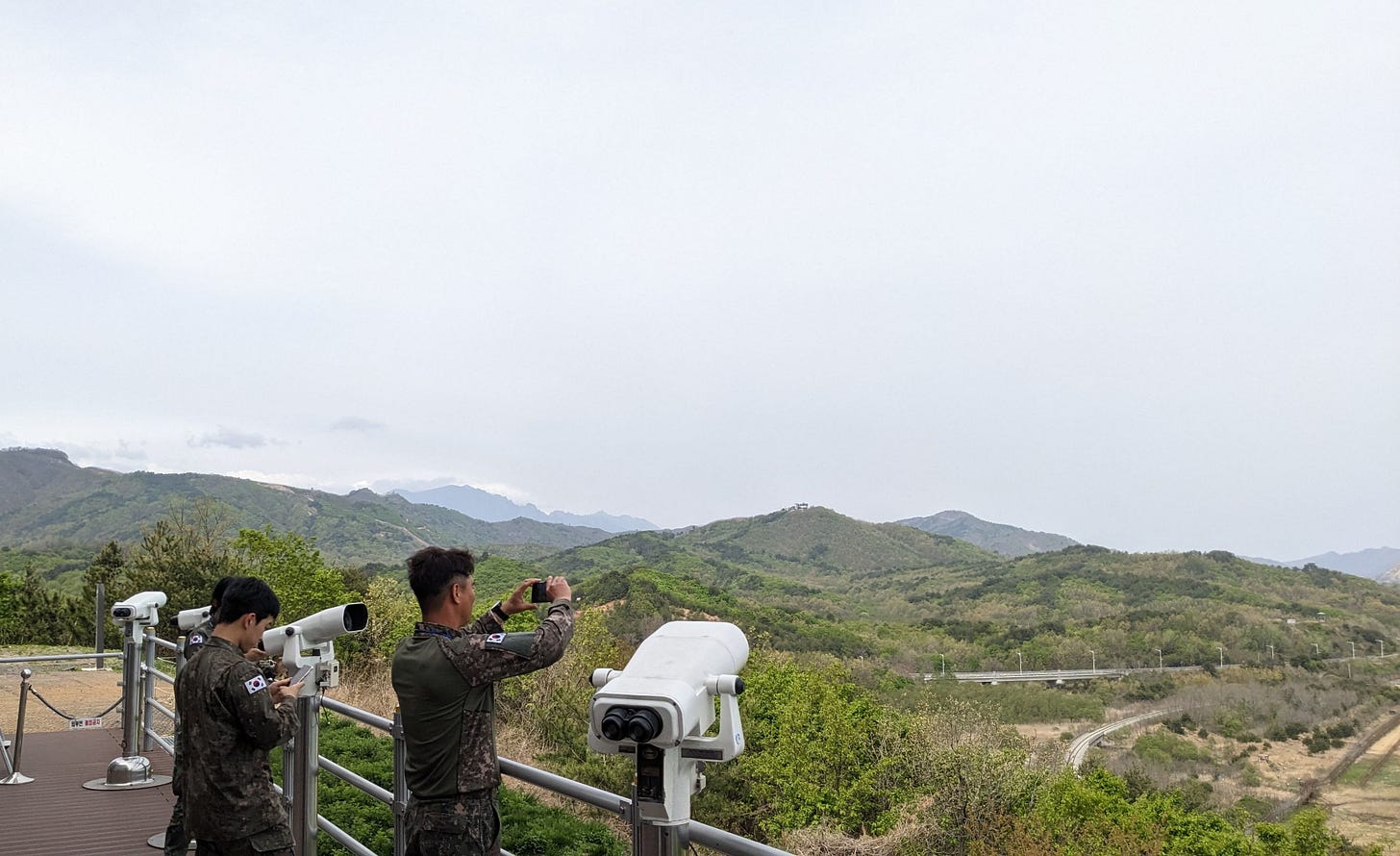I was trying to take a short video to show my parents the east coast of Korea. I got as far as “Hello, Dad and Mom, I’m standing on a beach, quite close to North . . .
The thundering sound of gunfire interrupted me.
. . . Korea,” I finished as the echoes blended with the sound of waves, “—North Korea.” And then I hastily added, “don’t worry, it’s South Korea and it’s just practice.”
Little comfort, I suppose.
I’ve gotten used to the deafening roar of fighter jets overhead and the headlines about whatever North Korea fires into the East Sea and how the USA and South Korea respond. But the sound of heavy guns was more unsettling. I never sent the video.
Wending my way along the beach picking up shells, I re-pondered thoughts that had gone through my mind earlier in the day while gazing at the DMZ and our northern neighbor, through coin-operated binoculars. Had they been looking back at us through the same?
How bizarre it all seems—human beings hell-bent on creating and maintaining borders, walls, and fences to separate themselves from other human beings. We have weapons designed to kill our own kind. Then we build museums commemorating all the times we killed each other, all the while repeating the same history with a 21st-century twist. What a species we are.
I was accompanying Yeongwol community’s middle school DMZ field trip, which took us about three hours northeast into Goseong state, part of Gangwon-do province (see map.) The highway ran along the coast with high mountains receding into the distance on the left and the sea just visible to the right—a strip of blue on the horizon beyond small hills, rice paddies, farms, and varied infrastructure. As we approached the northeastern tip of South Korea, we got to military territory —the orange portion of map below—where we stopped to register our vehicle and passengers. Then we drove to Goseong Unification Observation Tower. The observatory building, built in 2018, is located at the end of the road within the “Civilian Controlled Line Area” (green). In more peaceful times, a road reaching closer to the DMZ was constructed and used. But that’s military-only right now.
We gazed from the tower at the craggy mountains of North Korea, the thickly wooded mountains of the DMZ between “us” and “them,” and picturesque little islands poking out from the sea. The beauty of it pained me: It’s like Snow White lying in a glass coffin, I thought. Alluring but tragically untouchable; goodness corrupted by selfishness.
Looking closer I could see lookouts on the mountains, and barbed-wire-topped fences snaking through the trees. The beaches, for at least 30 kilometers, were equally armed. The sight of waves washing onto sand made me long to run along the water’s edge, but instead those same strong fences ran menacingly along, declaring the existence of an enemy.

Later, we went to the 6.25 (Korean) War Exhibit building and the DMZ Museum. The Korean War might be the “Forgotten War” in the USA, but on this side of the world there is a peninsula where one people divided into two, where brothers shed blood of brothers, where two or even four million civilians died along with more than 1,250,000 troops from several countries1. And yet what was accomplished?
I always knew that the 38th parallel cut a country in half, separating a people and even families. It’s a history I am slowly learning more about while adding real faces and places to my limited book knowledge.
Walking through the DMZ museum, a map caught my eye: I saw the province name “Gangwon-do”—my home. If someone asks where I live, my general answer is “Gangwon-do” —like saying “New York.” But I didn’t realize the Gangwon-do I know is just the bottom half. The top half is in North Korea. That had never occurred to me. I looked at the map incredulously.
Sometimes it’s the tiniest little detail that leaves the greatest impression.
The DMZ really does cut right through a country, through provinces, through the heart of a people. It would take a miracle beyond my imagination for this broken land to be healed and reunified. In the meantime, I pray for peace, and I pray that humans will remember that the other side is human too.
https://goforbroke.org/history/conflict-history/korean-war/














Thanks very much for this. It brings that very real history very much alive as reality. To see those two mountains and the tension you can almost see makes you realise the daily horror of it all; a graphic reminder of why we have a place there representing peace.
Hi, thanks for your interest!
I, like you, did not have too much interest in going to the DMZ but it certainly is impressive to experience one of the most heavily armed frontiers in the world. Thought-provoking...
Perhaps to get a true feel of Korea, it's important to travel beyond Gangnam and other "hot" tourist attractions although those certainly are part of modern Korea.
Have a wonderful Korean experience!